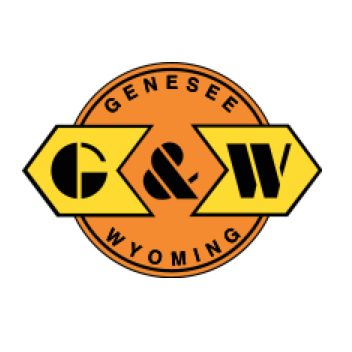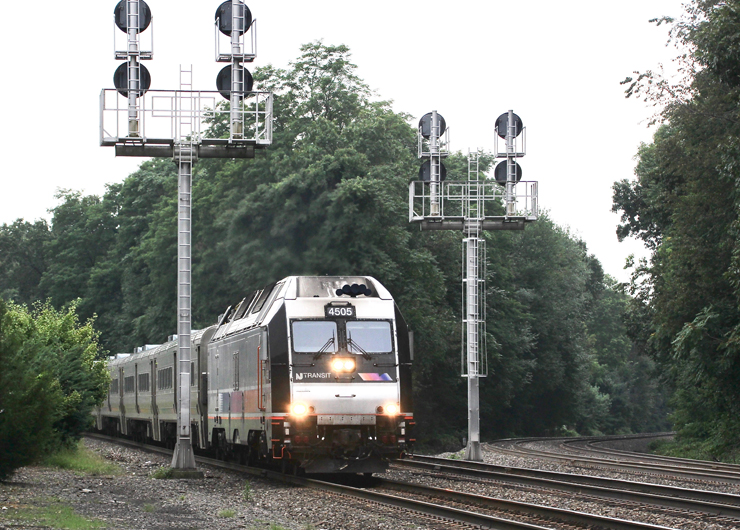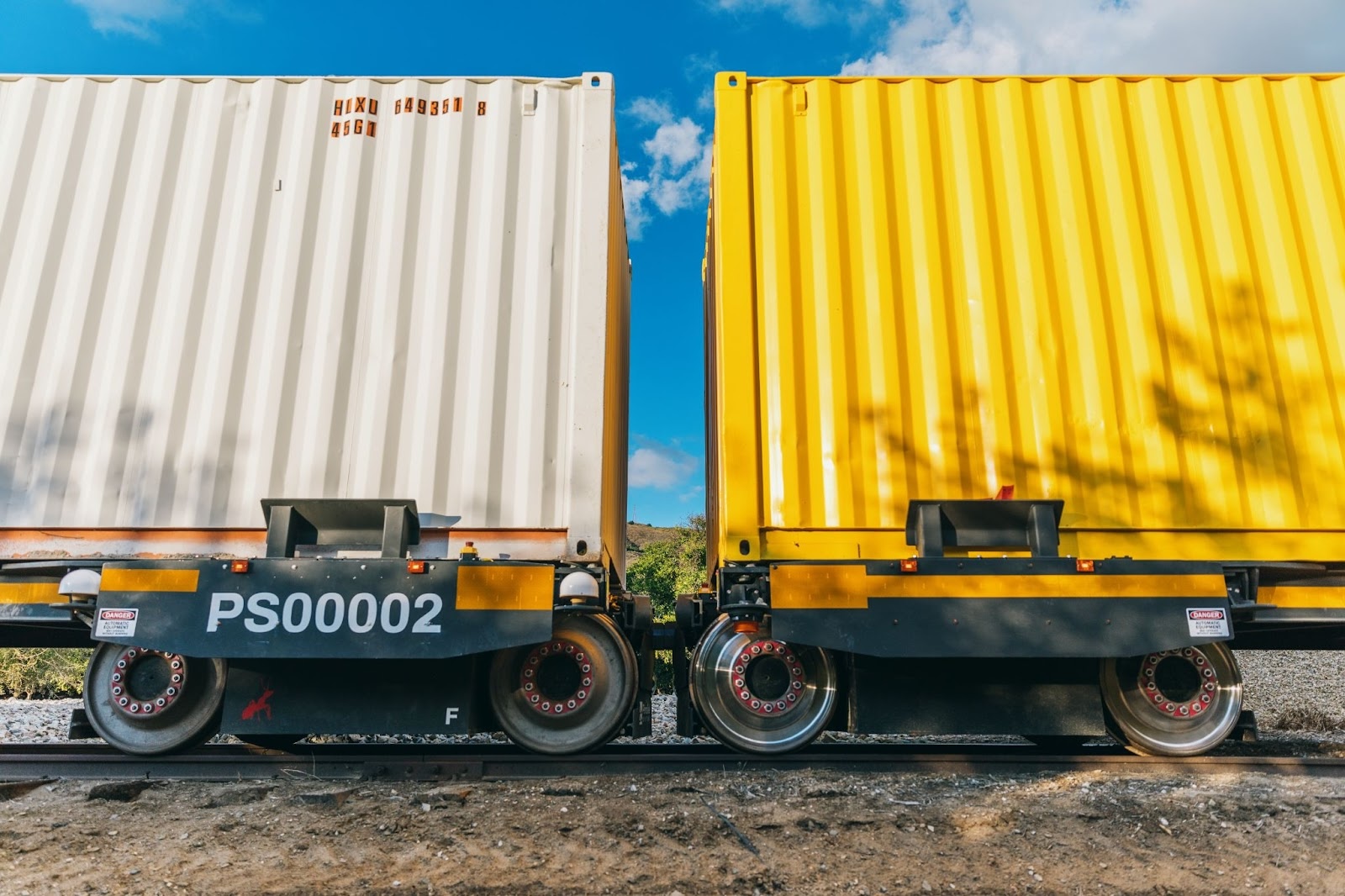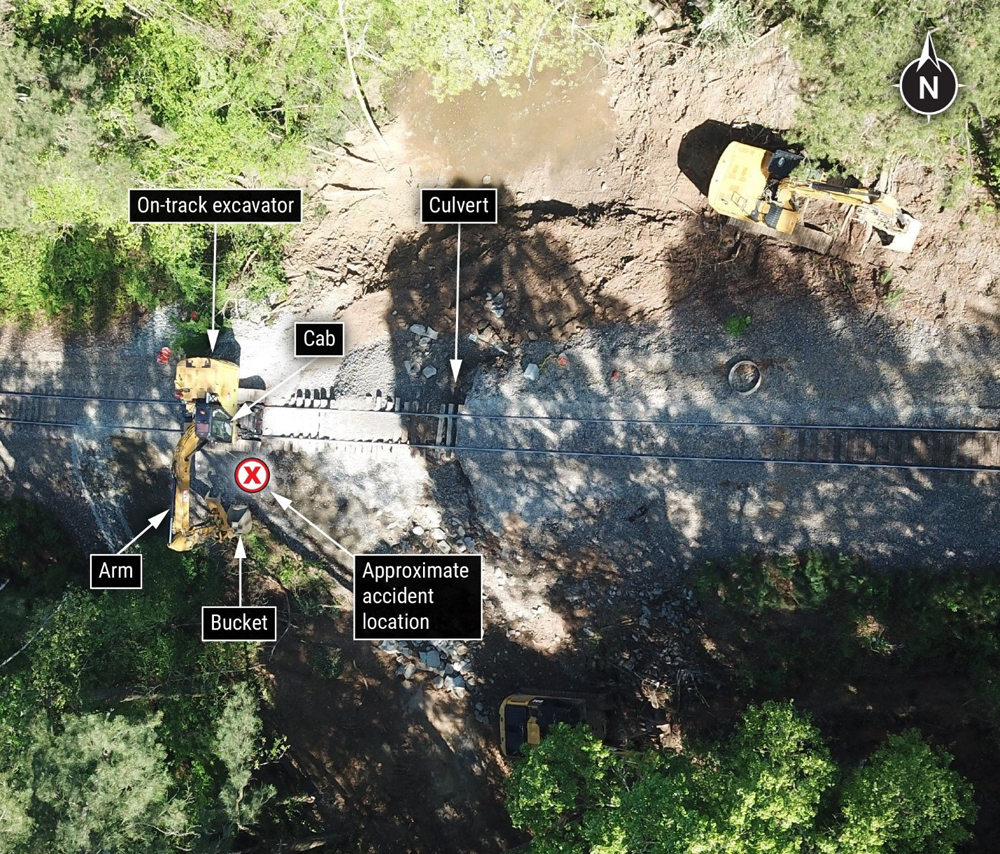
G&W locomotives to scrap or upgrade: Genesee & Wyoming recently entered into a consent decree with the U.S. Justice Department and the EPA that requires it to disable or upgrade more than 70 locomotives currently operating. The original News Wire article is online.
The key parts of that EPA decree read as follows:
“Defendants shall permanently remove from service each of the listed Locomotives by either: a. irrevocably disabling the Locomotive Engine (e.g. cutting the engine’s prime mover) and selling the remaining Locomotive frame for scrap metal; or b. irrevocably disabling the Locomotive Engine (e.g. cutting the engine’s prime mover) and installing a replacement Locomotive Engine (and any necessary associated components) such that the Locomotive is able to meet EPA’s Tier 3 or 4 emission standard in 40 C.F.R. Part 1033.”
AND
“Nothing herein prohibits Defendants from scrapping, recycling, or reusing the balance of the Locomotive (i.e. parts other than the Locomotive Engine) for parts on other Locomotives, but the Locomotive frame shall not be placed back into use unless and until the Locomotive meets the Tier 3 or 4 emission standard.”
According to the court filing, G&W locomotives to scrap or upgrade include the following locomotives, railroads and locomotive models:
| Locomotive | Railroad | Model |
| AGR3309 | AGR | SD40-2 |
| AGR3354 | AGR | SD40-2 |
| AGR3355 | AGR | SD40-2 |
| AGR3356 | AGR | SD40-2 |
| AGR3373 | AGR | SD40-2 |
| AGR3374 | AGR | SD40-2 |
| AGR3375 | MNBR | SD40-2 |
| BPRR3301 | MNA | SD40-T2 |
| BPRR3302 | MNA | SD40-T2 |
| BPRR3330 | MNA | SD40-3 |
| BPRR3332 | MNA | SD40-3 |
| BPRR458 | AGR | SD40-3M |
| CAGY3310 | CAGY | SD40-2 |
| KYLE3203 | MNA | SD40M-2 |
| KYLE3207 | MNA | SD40M-2 |
| MNA3300 | MNA | SD40M-2 |
| MNA3363 | MNA | SD40-2 |
| MNA4081 | MNA | SD40-2 |
| MNA7000 | MNA | SD40-2 |
| MNA8055 | MNA | SD40-2 |
| AKMD400 | AKMD | GP10 |
| PW2216 | OHCR | B23-7S |
| AKMD707 | AKMD | GP8 |
| AKMD728 | AKMD | GP8 |
| OHCR4092 | OHCR | B23-7S |
| BPRR887 | SB | GP9-3 |
| ALM1812 | ALM | GP28 |
| YRC1604 | YRC | GP16 |
| ATW1612 | ATW | GP16 |
| BPRR886 | WCOR | GP9 |
| BPRR926 | SB | GP18-3 |
| CA2158 | CA | GP7 |
| CAGY1806 | CAGY | GP11 |
| OHCR4094 | OHCR | B23-7S |
| CAGY8720 | CAGY | GP11 |
| CBNS1705 | CBNS | GP9-3 |
| CCPN1701 | CCPN | GP9 |
| CFNR1570 | CFNR | GP15-1 |
| CSCD1001 | CSCD | GP10 |
| CSCD1002 | CSCD | GP10 |
| OHCR4095 | OHCR | B23-7S |
| OHCR4099 | OHCR | B23-7S |
| FCRD1602 | FCRD | GP16 |
| FCRD1605 | FCRD | GP16 |
| FCRD1810 | FCRD | GP10 |
| GC1706 | RSOR | GP10M |
| GC1713 | HOG | GP9 |
| GC1761 | GITM | GP16 |
| GSWR1208 | GSWR | SW1200 |
| OHCR8712 | YB | GP11 |
| ISRR4040 | BAYL | GP40-1 |
| KRR4033 | AKMD | GP40 |
| KRR4050 | DGNO | GP40-1 |
| KWT304 | KWT | GP10 |
| KWT1807 | KWT | GP18-3 |
| OHCR1711 | POHC | GP10 |
| LDRR1710 | LDRR | GP8 |
| OHCR8702 | YB | GP11 |
| MNA3026 | MNA | GP40 |
| MNA4010 | MNA | GP40 |
| MNBR3057 | AGR | GP40-1 |
| NCVA3808 | NCVA | GP40CU |
| NECR1750 | NECR | SD9 |
| RCPE3437 | RCPE | SD40-2 |
| NECR4049 | BAYL | GP40 |
| OHCR3185 | OHCR | B23-7S |
| OHCR4098 | OHCR | B23-7S |
| PNW26 | AKMD | SW9 |
| PNWR1501 | PNWR | SD7 |
| PNWR1801 | PNWR | GP9 |
| PNWR1803 | PSAP | GP9 |
| PNWR1852 | PNWR | SD9 |
| PNWR1854 | PNWR | SD9 |
| PW2215 | CSO | B23-7S |
| YRC1606 | YRC | GP16 |
| ARZC4002 | ARZC | SD40-2 |
| ATW109 | ATW | GP10 |
| RLIX1004 | MMID | SW1001 |
| RLIX1250 | RAIL | SW7 |
| RLIX1251 | RAIL | SW7 |
| RLIX137 | RAIL | SW7 |
| RLIX266 | RAIL | SW10 |
| RLK4001 | OVR | GP9-3 |
| SAPT1001 | SAPT | SW1001 |
| SAPT1002 | SAPT | SW1001 |
| WTRY1203 | WTRY | SW1200 |
| WTRY1205 | WTRY | SW1200 |
| YRC1600 | YRC | GP16 |
AGR=Alabama & Gulf Coast Railway
AKMD=Arkansas Midland Railroad
ALM=Arkansas Louisiana & Mississippi Railroad
ARZC=Arizona & California Railroad
ATW=Atlantic and Western Railway
BAYL=Bay Line Railroad
CA=Chesapeake & Albemarle Railroad
CAGY=Columbus and Greenville Railway
CBNS=Cape Breton & Central Nova Scotia Railway
CCPN=Corpus Christi Terminal Railroad
CFNR=California Northern Railroad
CSCD=Cascade and Columbia River Railroad
CSO=Connecticut Southern Railroad
DGNO=Dallas, Garland & Northeastern Railroad
FCRD=First Coast Railroad
GITM=Golden Isles Terminal Railroad
GSWR=Georgia Southwestern Railroad
HOG=Heart of Georgia Railroad
KWT=KWT Railway
LDRR=Louisiana & Delta Railroad
MMID=Maryland Midland Railway
MNA=Missouri & Northern Arkansas Railroad
MNBR=Meridian & Bigbee Railroad
NCVA=North Carolina & Virginia Railroad
NECR=New England Central Railroad
OHCR=Ohio Central Railroad
OVR=Ottawa Valley Railway
PNWR=Portland & Western Railroad
POHC=Pittsburgh & Ohio Central Railroad
PSAP=Puget Sound & Pacific Railroad
RAIL=Rail Link, Inc.
RCPE=Rapid City, Pierre & Eastern Railroad
RSOR=Riceboro Southern Railway
SAPT=Savannah Port Terminal Railroad
SB=South Buffalo Railway Company
WCOR=Wellsboro & Corning Railroad
WTRY=Wilmington Terminal Railroad
YB=Youngstown Belt Railroad
YRC=York Railway














Well the EPA is at it again, this short sided politically motivated move could cripple the railroad and for what???? As soon as China India and all the other Polluting countries get on board with saving the planet I’d agree with all the GREEN ENERGY BS that’s going on in this country. Until then let’s not kill off very important short lines and a very big part of the US supply chain just to make a FEW liberal elites happy. EPA 93% known essential is all you need to know. UPRR conductor since 2004.
Its too bad that many old first generation locomotives are going in this scrapfest. SD7’s, GP7’s, SW1000’s. Wow think of all the old parts that the museums and historic societies could have used that are now going to get scrapped.
It said in the article that they could reuse or recycle any parts other than the prime mover. That would be a good stockpile of parts for many years to come. The feds should not be telling anyone how to run their business. But there’s socialism for you.
I’d say it’s pretty fair for the feds to step in. These locomotives were kinda filthy and we really should try and push these companies to be cleaner.
This seems rather draconian. I don’t think the EPA should be dictating to business they have to throw away serviceable equipment with a large value.
Will go hug a tree and find another cause to fill your day.
There is a concept that’s called a law and that you are required to follow, whether you are a business or a person; if you don’t, you’d face consequences. G&W didn’t perform the required maintenance for these locomotive to maintain their existing Tier-0+ emission levels, or didn’t document it properly. They got hammered by the Feds, which was the right call. It’s just too bad that this will make the used 4-axles locomotives market tighter than it currently is, but in this case the real culprit is obvious, and it’s not the EPA.
Of course, you may prefer to breathe filthy air and get sick as a result, but you know, growing up and living in good health is a basic human right too.
I suspect the fleet overhaul records of other short line holding companies will be reviewed and similar announcements will be made.
Surprised the EPA’s authority extends to Canada–how do the Canadians feel about this? But prosecutors may demand anything in plea bargain agreements which is what this extortion is. The consequences to other operators without G&W’s “deep pockets” is going to be drastic. G&W is now private; when they were public I made a lot of money thru them on their “Ampersand System”, the This & That Lines; I remember when the G&W was just a salt-hauling All ALCO shortline near Rochester NY and a great train chase.. How it grew!
Oh, and maybe eight feet from me now is a now-illegal top-loading washer-dryer tower unit. Perfect use of the space but I dread when it dies–right now it’s grandfathered but what happens when Brandon gets any bright ideas?. Yes, such washer-dryer tower units are now illegal just like we can’t use incandescent bulbs and soon gas ranges anymore.
EPA’s authority doesn’t extend to Canada, but it means the locomotives in question would be restricted to Canadian operations only and could no longer operate in the US. In fact, Canada does have some non EPA-compliant locomotives : a group of QNSL AC4400CW’s delivered in 2006 after Tier 2 kicked-in, and a group of CN ES44AC’s #2951-2975 delivered in 2016 that are not Tier IV credit units.
Do we know from either G & W or the EPA exactly what problems, failures or actions at G & W led to this order? Are other roads vulnerable? G & W’s agreement to the action seems to be an acknowledgement that they somehow goofed on either maintenance or documentary requirements.
Please tell me what the environmental impact is incurred by wholesale scraping of usable equipment, compare to allowing their use for the rest of their serviceable lives?
Exactly
Surprised to see a CBNS engine on the list. I wouldn’t have thought they would have jurisdiction north of the border.
Nuclear powered steam locomotives are the ultimate solution with current technology.
What happened to things being Grandfathered? Let them run until they are no longer viable operationally.
You can run them ’til the wheels fall off, but maintenance to the engine (prime mover) must be accurately recorded and within certain parameters, i.e. you can only change 1/4 of the power assemblies of a given engine during a calendar year. Anything above that and a tighter degree of emissions is required. Apparently, G&W’s roads were not following the regimen and/or not keeping the records required. Now a higher standard than required by law is to be decreed on G&W with their consent.
This ruling hurts many short line operators and many which only can afford to own and operate older diesel models and which they buy at used or secondhand prices.
Some only have one or two units in their fleet or only need as their business and size requires. For them to get rid of these “problem” units as the EPA sees fit will either put them out of business or force them to buy more expensive units which will break their operating revenue or whatever money they are able to make. These small “Mom and Pop” lines do provide a needed service in many parts of the country where the Big Four gave up or abandoned their customer base to serve the needs and wishes of Wall Street. Once again this is a case of the government trying to regulate and control how the small independent business and short line railroad should be run and what they must use to haul tthose goods Watch out small businesses on Main Street in your local towns. The EPA will be coming next for your shops and restaurants if you don’t use or follow certain rules or so called envirnmental safe products in your stores they might force you to shut down or shutter your business
Joseph C. Markfelder
Do you really think government cares about any business?
I find it hard to believe that an SD40-3M is on this list, though I could see why since it probably only meet Tier 1 or 2 status, but it’s already been rebuilt at least twice, so that’s just a complete waste.
If any of you where to bother reading the actual consent decree, you would find that technically only 18 diesels on this list are tier 0(zero). Quite a few of them are Tier 1 or 2, I think G&W is taking the opportunity to use the consent decree to get rid of units they otherwise would’ve kept around. They’re going to try and standardize the mix of power on their rail lines and this is one way of getting rid of those smaller and less common locomotives.
Didn’t we go through this with automobiles? “Cash for Clunkers”. Our socialist government ordered serviceable cars destroyed. The net benefit to the environment? There wasn’t any.
Who got hurt? The families at the bottom of the economic totem pole. Same here with locomotives. Who gets hurt? Not Union Pacific or CNR or BNSF, but the hand-to-mouth regionals and short lines.
The only thing I will disagree with you on this one Charles is classifying G&W as a hand to mouth operation…if it was considered a single railroad it would fall under Class 1 status. Just because the individual railroads might look like they’re hand to mouth, CORPORATE can easily afford this issue…especially since they are known to move units between difference carriers AS NEEDED. It’s also why everything ends up getting painted in the Corporate colors for G&W, these are individual railroads in name only(and local management).
Wouldn’t somebody want to be in the locomotive leasing business.
I would say this is egregious overreach except G&W is agreeing to the decree. But tier 3 or 4? Seriously? Lots of rebuilds to come (hopefully with OPM) and lots of 1st gen locomotives going to rebar and razor blades.
Is this just the tip of the iceberg for the many small roads using older and sometimes rebuilt locos? Or is the EPA just helping the Class 1s clean out their deadlines of unneeded but still fairly new locos? 70 locos is a lot to replace.
Well sounds like PRLX is going to have Some Locomotives to Rebuild
Why can’t these be made available to museums. The emissions are not any higher than for many other locomotives operated at museums.
Depends if the said museum finds them of any historical value.
Anyway you look at this, some one is going to get a nice plump order for new or rebuilds.
Obviously this is going to have an impact on some of the other branch line aggregators like Patriot, Watco, Pinsly, but not Pioneer since they just sold themselves.
The ultimate action is scrapping the prime mover. After that the “frame” (everything else) is sold as scrap metal. Anyone can buy what’s left, give it a nice paint job and put it on display as an empty shell. Maybe someday in the future when rationality resumes an appropriate engine/generator can be sourced and the relic returned to service for future generations to enjoy.